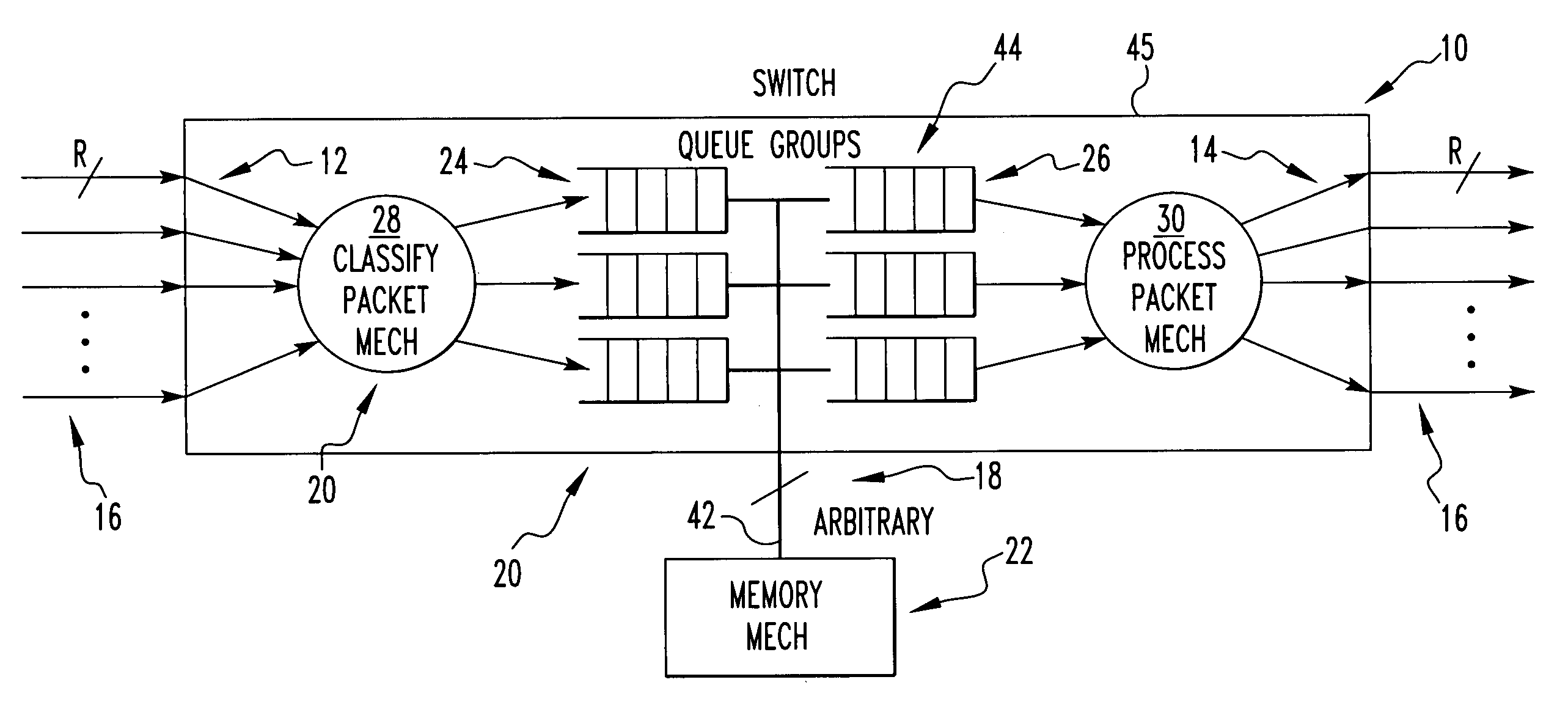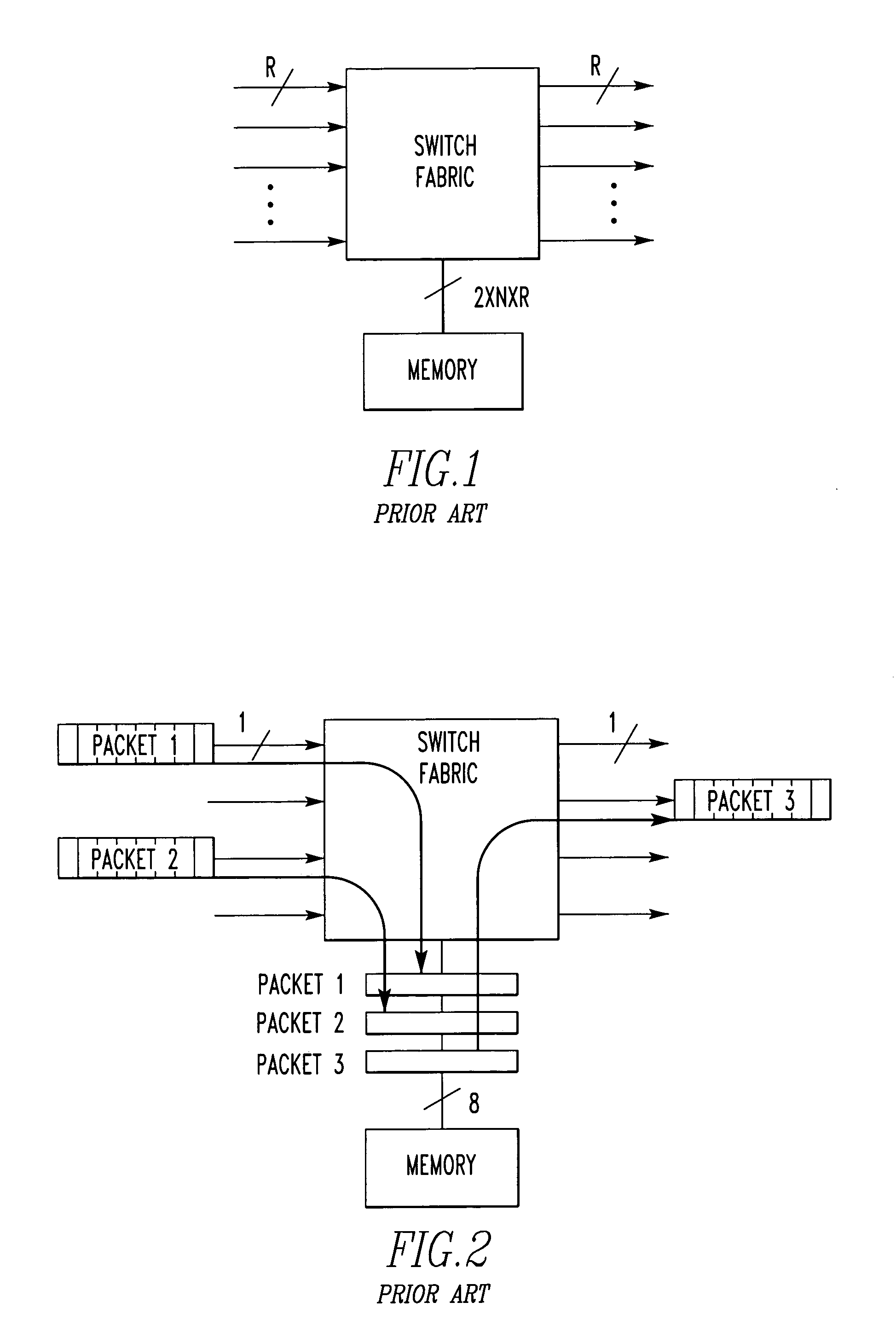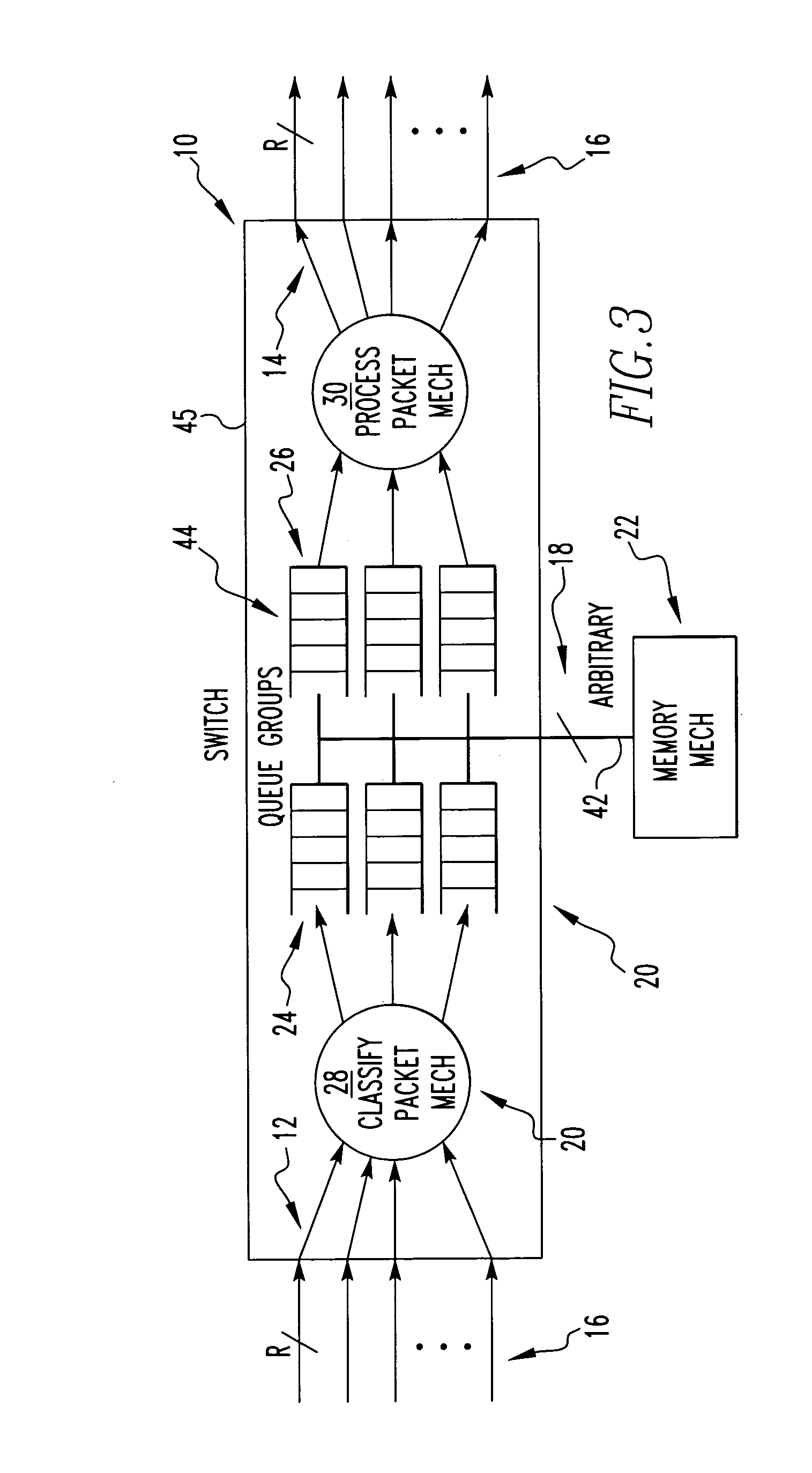Very wide memory TDM switching system
a switching system and very wide memory technology, applied in data switching networks, time-division multiplexing selection, multiplex communication, etc., can solve the problems of reducing the performance of tdm systems, reducing the design of tdm switching systems in practice, and limiting the current memory bus speed to roughly 300 mhz
- Summary
- Abstract
- Description
- Claims
- Application Information
AI Technical Summary
Problems solved by technology
Method used
Image
Examples
example
[0067]A four input port, four output port packet switch is implemented using the system 10. The system is globally synchronous and operates on a 20 MHz clock. The four inputs operate at 8-bits wide and implement four 160 Mbps interfaces. The packets are delineated using a start of packet (SOP) and end of packet (EOP) code word, as shown in FIG. 5.
[0068]The example assumes an output queued switch. The packets that arrive on the input ports of the switching system 10 are classified into four queue groups, one for each output port. Referring to FIG. 4, an output queue is implemented for each group in three sub-systems:[0069]1. The tail is implemented in the switch fabric by a Write Finite State Machine (W-FSM).[0070]2. The middle is implemented in the shared memory.[0071]3. The head is implemented in the switch fabric by a Read Finite State Machine (R-FSM).
[0072]Reads and writes to shared memory are implemented on data in the queue group and are performed without knowledge of the packe...
PUM
 Login to View More
Login to View More Abstract
Description
Claims
Application Information
 Login to View More
Login to View More - R&D
- Intellectual Property
- Life Sciences
- Materials
- Tech Scout
- Unparalleled Data Quality
- Higher Quality Content
- 60% Fewer Hallucinations
Browse by: Latest US Patents, China's latest patents, Technical Efficacy Thesaurus, Application Domain, Technology Topic, Popular Technical Reports.
© 2025 PatSnap. All rights reserved.Legal|Privacy policy|Modern Slavery Act Transparency Statement|Sitemap|About US| Contact US: help@patsnap.com



